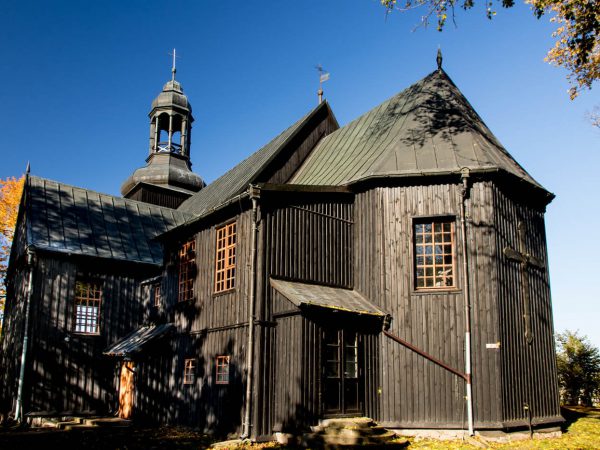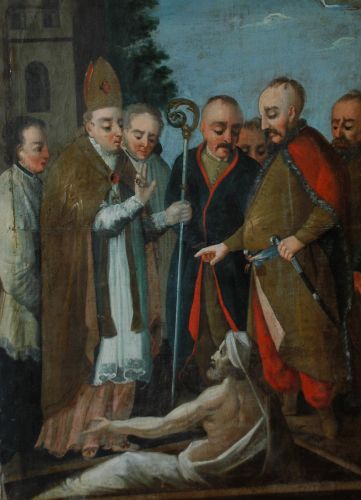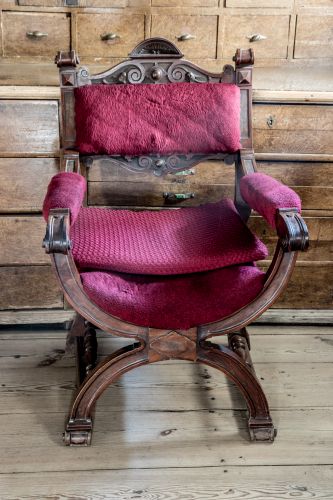
POPOWO KOŚCIELNE: church of Annunciation to the Blessed Virgin Mary
Date of construction: 1629 www.parafiapopowokoscielne.plMonuments
Sarmatian traditions

We can find an image of St. Stanislaus also in the church in Popowo Kościelne – it can be found on the side altar. Here (as in Sokolniki) an artist transferred the historical scene from the 11th century to his times – into the 17th century. The bishop is shown here in typical clergyman’s clothes but the rest of the figures are wearing Sarmatian clothing typical for 17th century noblemen.
A Polish Sarmatian was a warrior, his character traits were courage, manhood and also freedom. He should fight to defend the country and Christian faith. Sarmatism as one of the schools of thought and artistic trends of Polish Baroque is an untypical phenomenon. In the church in Popowo Kościelne one can notice its influence in coffin portraits put on the walls made at the end of the 17th century and on many portraits of founders presented in Sarmatian clothing.
Sarmatian clothing was very grand, rich and colourful. It consisted of a caftan tied with a belt, on which a robe called kontush was worn. Shalwar pants were put on legs. Characteristic for a Sarmatian were a mustache and a beard, a trimmed head with a lock of hair left on its top.
According to an 11th century legend Stanislaus the bishop of Cracow planned to build a church. He bought a piece of land from a knight called Piotrowin, who soon died. Stanislaus was accused on taking the land unlawfully,. A court was called and the trial began. Because Stanislaus couldn’t prove his innocence, the resurrected the deceased Piotrowin so that he could testify. This way the accusation was lifted and St. Stanislaus regained his honour.
The church was founded in 1629 by Stanisław Zagórski, a burgrave of Nakło. Perhaps it was his or the following owners of the village initiative to add a benefactor’s lounge (for the founder) above the vestry. This location emphasized the special position of the noblemen, the aristocracy, who attended the mass separated from the commoners, very close to the sacrum area.


Patron's loge
In the church chancel, the place for the clergy, a patron’s (founder’s) loge was built. It is a separated area for a few people, usually designed for important people or founders. The Latin word “collator” means a donor, patron of the church or its founder. Those people were usually estate owners from the parish area. They had a right to present the bishop candidates for church’s benefactors. They could also place tomb slabs in the church and posses their benches.

Celebrant's throne

Next to the patron’s loge there is one other element of the church furnishing designed for important figures – that is a celebrant’s seat. It is placed in the sedilia which is a place for the celebrant and his assistance, usually found in the chancel. Sedillias were put by the chancel’s wall. In time, the seats started to resemble thrones, especially the ones for the celebrant. The priest sits there during liturgical chants performed by the choir or during readings. After the renewal of liturgy, the celebrant’s and his assistants’ seats have been directed so that the faithful know that the celebrant leads the liturgical community.

